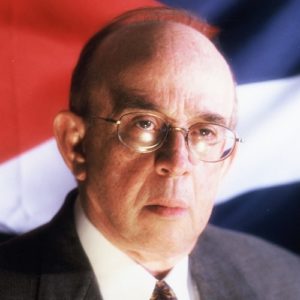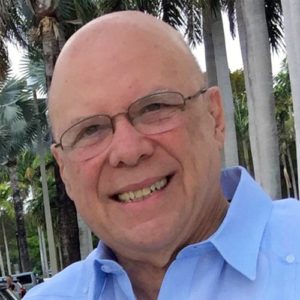Title first used by the Cuban Communist movement (hitherto the Union Revolucionaria Comunista) from 1933. This PCC backed the 1935 general strikes in Havana. In 1938 Batista negotiated a coalition whereby the party joined in forming the Coalición Socialista Democrática to support him in the election of 1940. The rewards were legalization of the party and considerable influence on Batista’s first administration, including a minister without portfolio, Carlos Rafael Rodríguez. In 1944 the party became the Partido Socialista Popular (PSP), retaining the new name until the Revolution of 1959. The Partido Unido de la Revolución Socialista (into which the PSP had been merged) was transformed without fanfare into the Partido Comunista de Cuba. A majority of its national committee were now former military, many from the guerrilla campaign in the Sierra Maestra. Less than a quarter were from the pre-1959 Communist Party, and it was dominated by the Castro brothers and their supporters. At the end of the 1960s, most of the party elite were still in their thirties.
Nevertheless, during the early period the new PCC remained small, disorganized, with no clearly defined role, and relegated to a secondary position vis-à-vis the armed forces. Internal leadership and coordination were poor, and meetings were few and of questionable value. Fidel Castro saw little need for a well-developed party structure, which could have reduced, or at least, rivaled his personalist leadership style. Conflict between old-guard Communists and Fidelistas also created tension and prevented the development of a strong organization. The best talents were attracted into the military or the bureaucracy and away from a party riddled with factionalism and only tepidly supported by the líder máximo. Even the Cuban Politburo was not established until late 1965.
The 1970, however, were a decade of expansion and consolidation. In 1969 there had been 55,000 party members, the lowest per capita ratio in any Communist country. This had grown to 202,807 by the first party congress in 1975. Later the rate of expansion slowed somewhat. Secretariat member José Ramón Machado Ventura disclosed that full members and candidates totaled 434,143 in 1981. The first party congress – numbering was not carried over from the previous PCC – was a watershed in legitimizing the position of the PCC as the guiding and controlling force in society. It reassured the Soviets of Cuba’s loyalty and friendship, extolling their continuous military and economic aid to the Cuban Revolution, and rehabilitating old-guard Communists, some of whom had been mistrusted and persecuted by the Castroites. Three of them, Carlos Rafael Rodríguez, Blas Roca, and Arnaldo Milián Castro, were elected to the Politburo. The party’s Central Committee, originally with 7 members, was also enlarged again, from 19 to 112, but the secretariat was kept at 11, with Fidel Castro and his brother Raul as first and second secretaries. Greater emphasis was placed on candidates who worked in industry, agriculture, teaching and services. As many earlier members had been promoted rapidly through the ranks and become party bureaucrats, there was a need for cadres in closer contact with the realities of the economy.
There was also an attempt to bring more women into the party, and especially, since 1975, to promote more into leadership positions. Despite the entry of more women into the labor force, however, they remain largely relegated to a secondary position in the party hierarchy and underrepresented. In his address to the congress, Castro attempted to reconcile the adoption of Soviet-style institutions in the island with a renewed emphasis on nationalism and the historical roots of the Cuban Revolution, the cumulation of a struggle against Spanish colonialism and American neocolonial involvement in Cuban affairs. With total disregard for Jose Martí’s ideas, he linked the independence leader with Lenin in order to justify Cuba’s move into the Communist camp. A Five-Year Plan was adopted, calling for closer economic integration with the Soviet Union and an economic system modeled on that of the other socialist states. The approval of the party’s platform stressing “Marxist-Leninist principles and the leading role of the Party” was further evidence of the impact of Soviet-style orthodoxy.
During the second party congress, convened in December 1980, the main tenets of the 1975 report were solidified, while presenting new dictums for the 1980s. At the international level, Cuba’s strong ties with the USSR were reaffirmed, while such principles as support for revolutionary movements abroad were defended, with special reference to Nicaragua and Grenada, and the armed forces’ role of assistance to such struggles was exalted. An escalation of tensions with the United States was foreseen as the result of Ronald Reagan’s election. In the economic sphere, the need for more state planning was stressed, and there was warning of a possible decline in production and exports due to the world economic situation. The 1980 congress strengthened the PCC’s structure and function in the political sphere. Following traditional Marxist-Leninist principles, it was envisioned as the vanguard of the people.
As preparations were made in 1985 for the third-party congress, many senior economic planners hoped for a liberalization and decentralization of the economy. The congress was, however, delayed until February 1986, presumably because Castro was formulating an economic plan for the next quinquennium. Castro opened the third congress with a harsh attack on bureaucracy and inefficiency and praised the economy growth of 7.8% p.a. over the previous five years. In a nearly six-hour speech, he chastised Cubans for their absenteeism, low productivity, shoddy product quality, waste of materials, and similar concerns. According to Castro the most significant achievement of this first part of the congress was the rejuvenating of the party leadership. Almost immediately after the first session of the congress ended, Castro ordered the “farmers’ markets” closed on the grounds of corruption and illicit enrichment. Some of the congress’s most important work was put off until the end of 1988.
The fourth party congress, announced for February 1991, was postponed until October. For the first time foreign observers and journalists were excluded. The party unveiled an economic plan to boost hard-currency exports, tourism, and foreign investment. The party moved to streamline its bloated bureaucracy, slashing national and provincial party posts by 50% and cutting the Central Committee’s bureaucracy from 19 departments to 9. Discrimination against Roman Catholics would end.
In 1997 the party held its fifth congress. Again, foreign correspondents and observers were excluded. The number of Politburo members was reduced from 26 to 24, and those of the Central Committee from 225 to 150. Resolutions adopted pledged to maintain the socialist economy and failed to announce any economic or political changes.
The party’s official newspaper is Granma and its other publications include its Estatutos and Sobre la lucha ideológica(both from its Central Committee’s Departamento de Orientación Revolucionaria in 1976).








